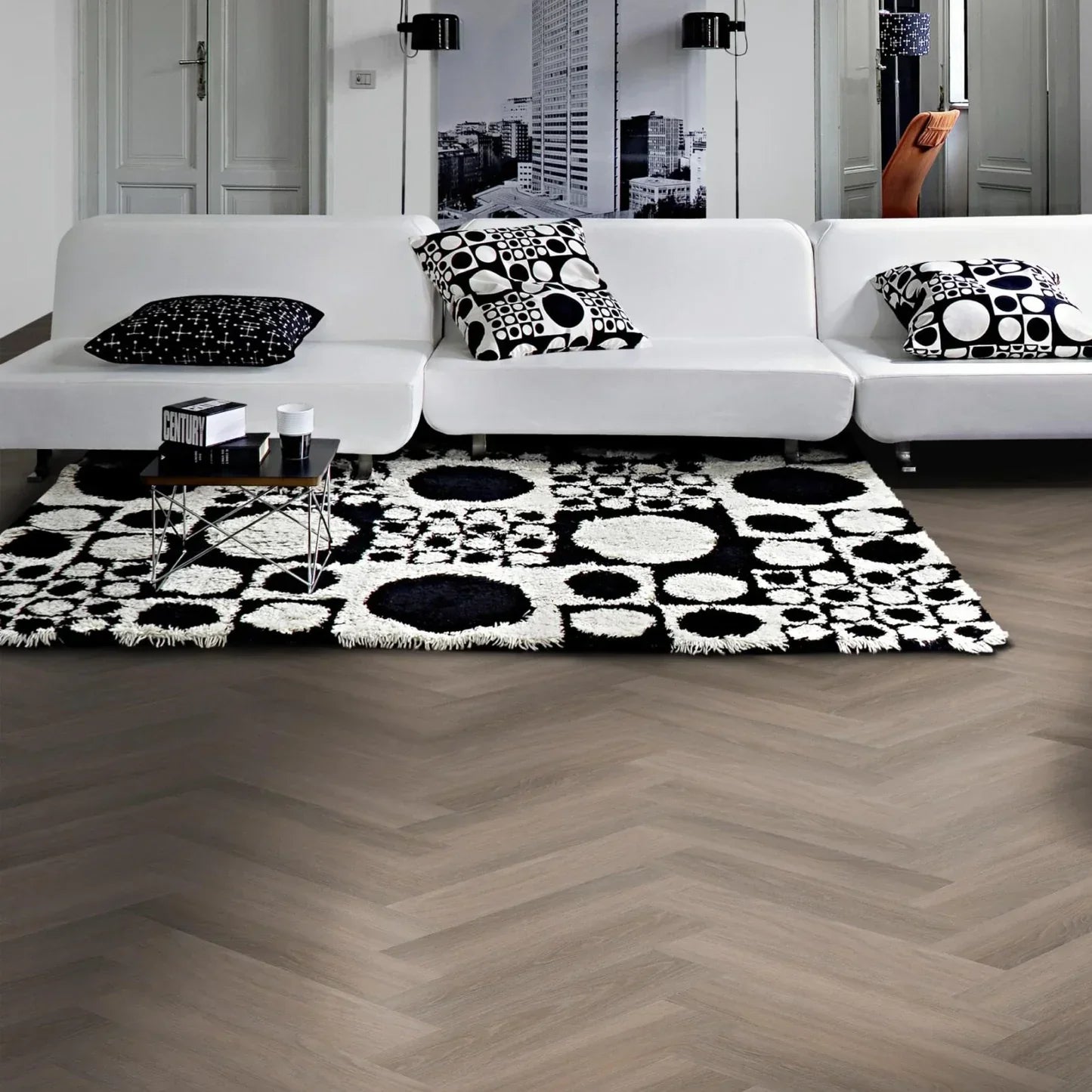
Author, Written by: P. Hirani (Wood flooring Expert)
Vinyl flooring has quickly become one of the most popular choices for modern homes—and for good reason. It's affordable, stylish, durable, and comes in a wide range of designs that mimic wood, stone, and even tile. But what gives vinyl its strength, comfort, and performance?
To answer that, it helps to understand what’s underneath the surface. Whether you’re shopping for luxury vinyl planks (LVP), luxury vinyl tiles (LVT), or sheet vinyl, here’s a beginner’s guide to the layers that make up vinyl flooring—and why they matter.
1. Wear Layer (Top Layer): Protection You Can Feel
This is the clear, topmost layer of vinyl flooring. It’s responsible for protecting the design underneath and determines how well the floor will hold up over time.
✔ Guards against scratches, scuffs, and stains
✔ Measured in mils (1 mil = 1/1000 of an inch)
✔ The thicker the wear layer, the more durable the flooring
🛡️ Quick guide:
-
6–12 mils = Suitable for residential spaces
-
20+ mils = Ideal for high-traffic or commercial areas
2. Decorative Layer: Where Style Comes to Life
This is the printed design layer that gives vinyl its appearance. Thanks to high-definition printing, it can closely replicate natural materials like oak, marble, or concrete—often with stunning realism.
🎨 Offers a huge range of looks, including:
– Wood grain textures
– Stone and ceramic tile patterns
– Abstract or minimalist designs
🌿 Bonus: Some styles even include texture (called "embossed in register") that aligns with the printed grain for a more realistic feel.
3. Core Layer: Strength and Stability from Within
This is the main body of the flooring and varies depending on the type of vinyl you choose. It’s where you’ll see the biggest difference between budget vinyl and premium options.
There are several core types:
✔ Flexible Vinyl Core
– Found in traditional sheet vinyl or budget LVP
– Thin and bendable, ideal for light use areas
✔ WPC (Wood Plastic Composite)
– Thicker and softer underfoot
– Waterproof and slightly cushioned for comfort
– Popular in residential settings
✔ SPC (Stone Plastic Composite)
– Denser and more rigid
– Excellent for high-traffic areas or commercial use
– Highly durable and waterproof
⚖️ Which to choose?
– WPC for comfort underfoot
– SPC for durability and dent resistance
4. Backing Layer (Bottom Layer): The Unsung Hero
The bottom layer provides stability and support, helping the floor sit properly on your subfloor and sometimes offering extra features like sound absorption or built-in underlay.
✔ Prevents moisture from seeping up
✔ Offers added comfort and insulation
✔ Some come with pre-attached pads—saving you time and money during installation
🔇 Bonus: Look for options with acoustic backing if sound reduction is a priority.
Why Layers Matter
Understanding vinyl flooring layers helps you:
-
Choose the right type for your lifestyle and space
-
Compare products more accurately when shopping
-
Know what you’re paying for—a thicker wear layer or denser core can justify a higher price point
-
Plan for installation—some layers include built-in underlay, which affects what you’ll need
Layered for Life
Vinyl flooring may look simple on the surface, but beneath that stylish exterior is a well-engineered product designed for real-life durability. Whether you’re remodeling your kitchen, bathroom, or basement, choosing the right vinyl flooring starts with understanding its layers—and now, you’re one step ahead.
✨ Need help comparing vinyl flooring types or choosing the best option for your home? Let’s walk through your options together—layer by layer.
About Author:
Peter H. is a flooring product expert who knows all about different types of flooring materials. He shares his knowledge in blogs to help readers make the best choices for their spaces.
